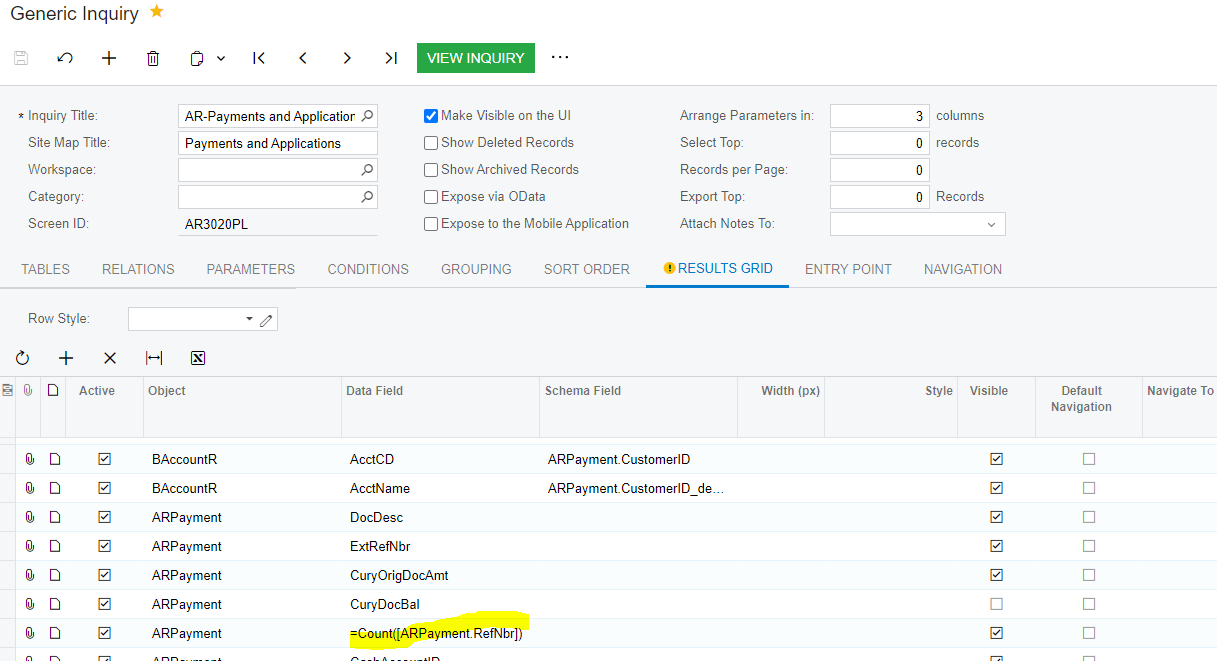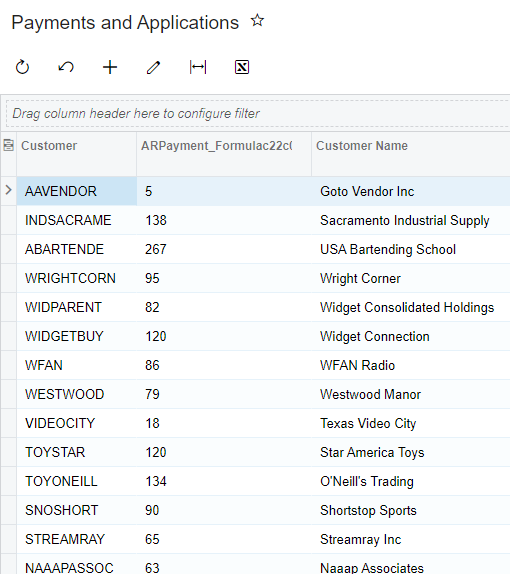Hello all,
I have been looking how can I calculate the number of payments done by the customer in a GI?
Hello all,
I have been looking how can I calculate the number of payments done by the customer in a GI?
Best answer by BenjaminCrisman
I would group on the customer for the payment and then use a Count() function or Count aggregate function to display the number of payments in the group.
You can quickly get this done by copying the AR Payments and Applications GI into a new one.
Then add a grouping:

Then add the function on the results grid and remove/add any fields you want to use:

Then the results will show you the number of payments for that customer:

Enter your E-mail address. We'll send you an e-mail with instructions to reset your password.